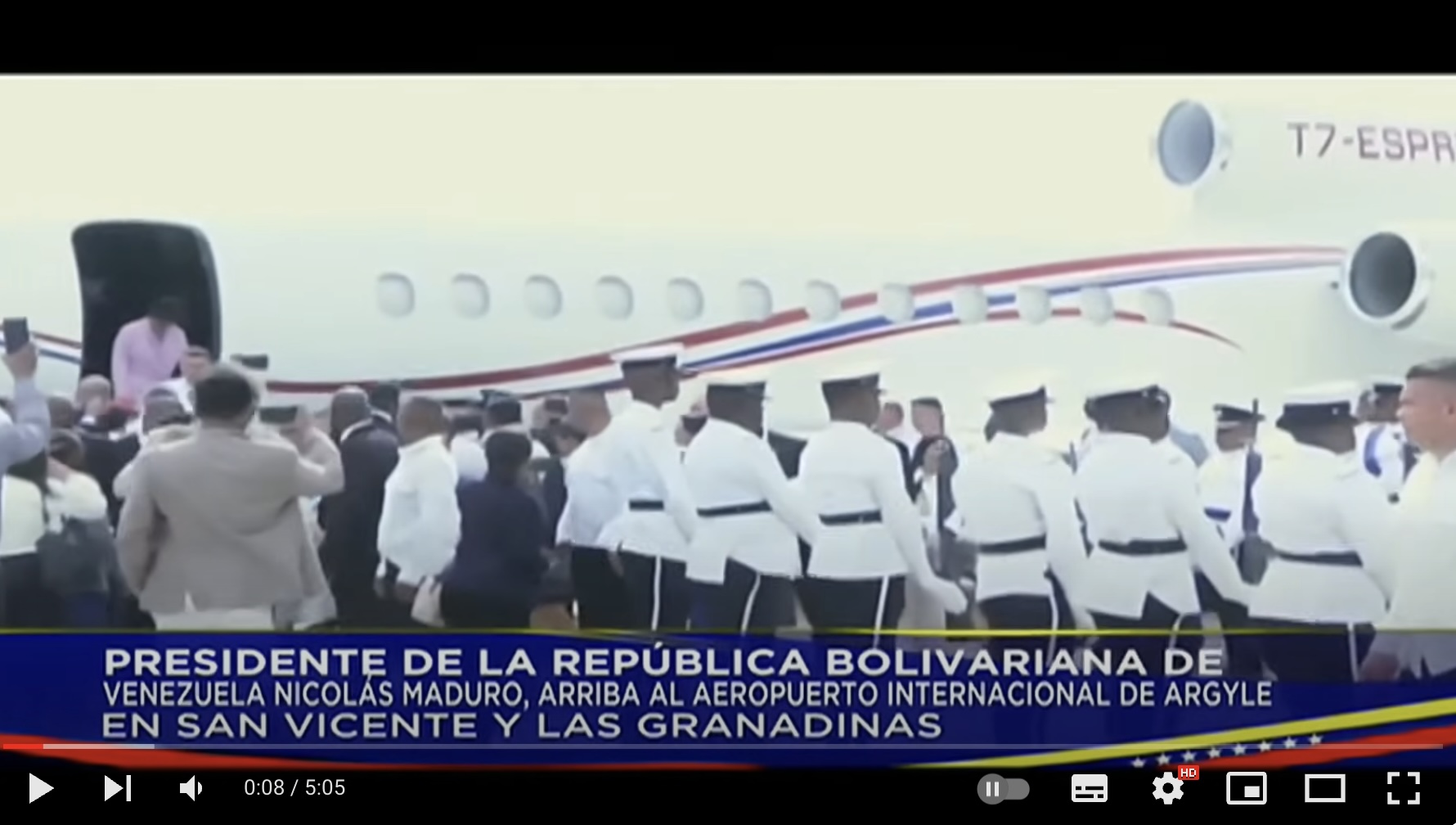Another U.S. provocation: Venezuelan government plane stolen
Marcos Salgado
The U.S. network CNN confirmed on Monday that the United States confiscated a Venezuelan government plane in the Dominican Republic and transferred it to Miami, where it was conveniently exhibited to the media, in what constitutes a new provocation that complicates the difficult path of negotiations between Caracas and Washington.
The Venezuelan Foreign Ministry, through a communiqué, indicated that this is “a recidivist criminal practice that cannot be qualified as anything other than piracy”, and confirmed that the aircraft “has been used” by President Maduro.
“This sends a message to the top,” a U.S. official told CNN. “Seizing the aircraft of a foreign head of state is a milestone in criminal matters. We are sending a clear message that no one is above the law, no one is beyond the reach of U.S. sanctions,” he graphed.
The ascribed media quickly bought the operation and labeled the hijacked aircraft as “the official plane” of President Maduro. According to CNN, their “sources” described the plane as “the Venezuelan equivalent of Air Force One,” a reference to the U.S. presidential plane. This is clearly not true, but it adds to the bread and circus and even more so when dozens and dozens of media outlets join in the dumb and uncritical chorus.
A plane used by the government, but not an official one
The French-made Dassault Falcon 900EX aircraft flying with the registration number T7-ESPRT was indeed used on some occasions by President Nicolás Maduro. It was used, for example, for the meeting at the airport of St. Vincent and the Grenadines with the president of Guyana, Irfaan Ali, in December last year. The same aircraft made the same trip a few days later, in the prisoner exchange operation by which the businessman and diplomat Alex Saab returned to Venezuela after his kidnapping in the United States and Cape Verde.

But this is not an official plane of the Venezuelan State. The official aircraft of the Venezuelan president is an Airbus 319, which for some years flew with the registration number FV-0001 and then passed to the fleet of the state-owned Conviasa, with the registration number YV2984. For some long-range trips, the Venezuelan president has used Airbus 340 aircraft of Conviasa, and once, also, an Ilyushin 96 of Cubana de Aviación, of Soviet manufacture.
The unilateral coercive measures of the United States against Venezuela turned the transfers of President Maduro and in general the operations of Conviasa’s airplanes into a headache. As happened in Buenos Aires with the EMTRASUR cargo plane, which the government of Javier Milei handed over to the US Marshals, who scrapped it in Florida.
Furthermore, due to the same measures, Conviasa’s airplanes do not obtain permission to operate in airports in several Latin American airports, which hinders the company’s commercial expansion. At present, Conviasa flies with its airplanes only to Mexico, Nicaragua, Bolivia, St. Vincent and the Grenadines, Barbados and Cuba, in addition to a flight to Manaus, Brazil.
Another provocation
The case of the Falcon 900EX began in May, when it was detained in the Dominican Republic, at La Isabela International Airport. There were only a few reports in the press of that country, which referred that it was a measure ordered by the Attorney General’s Office. At that time, neither the Venezuelan nor the Dominican government commented on the case. The low profile ended this Monday, with the U.S. move.
According to Bloomberg, a Florida court requested the seizure of the aircraft when it landed in La Isabela, on May 22. The same agency assures that the U.S. Department of Justice indicated that the aircraft was purchased through a shell company and “smuggled” out of the U.S. In any case, the same agency indicates that the measure was taken as part of the policy of “sanctions” against Venezuela.
According to CNN, several federal agencies were involved in the “seizure” of the plane, which was done in “close” work with the Dominican Republic, which notified Venezuela about the situation, they assured.
Complicated relations
The maneuver seeks to complicate the already difficult relationship between the United States and Venezuela. A back and forth that, in any case, continues to bear some fruits.
For example, this week it became known that Venezuela is emerging as a key player in the US crude oil market. According to the latest data from the U.S. Energy Information Administration (EIA), the U.S. consumed an average of 6,664,000 barrels per day (bpd) of crude oil in June 2024. Of this, Venezuela accounted for 3.4% by exporting some 226,000 bpd, slightly higher than the figure achieved in May when it shipped 224,000 bpd.
While the monthly figure may seem small, the same EIA confirms that year-on-year Venezuela’s crude exports to the United States registered a 79% increase. Venezuela is already the fifth largest exporter of oil to the US, just behind Saudi Arabia and above several Latin American suppliers, such as Brazil, Colombia and Ecuador.
It is just one element of several, which indicate that beyond the provocations, it is difficult to imagine that the United States will break lances with the government of Nicolás Maduro as Trump tried to do in 2019. Even an eventual return of the tycoon to the White House would hardly mean a return to failed tactics.
For the rest, and in the meantime, there is still the circus, like the one today at the Florida airport.
